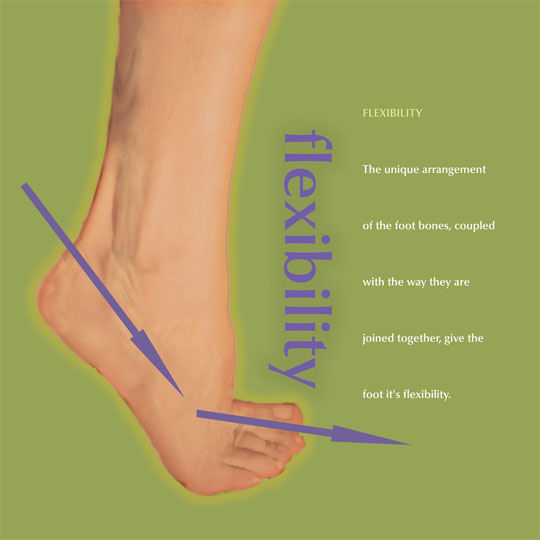Foot Orthotics & Biomechanics
Dr. John B. Perry DPM, FACFAS, Atlantic Foot & Ankle Center, P.A.Your foot strikes the ground and rolls through a step in about a one half of a second. All the weight of your body, twice your body weight, or four and a half times your body weight during running --stresses and stresses your bones and joints and ligaments. Over and over and over this occurs usually, without breaking down! Want to learn how your foot functions under this stress without breaking down? Read on.
Basic knowledge of anatomy of the lower extremity is necessary to understand biomechanics. Luckily for us the computer and internet gives us tremendous resources at our fingertips. Thus, if you would like further information read on at www.footmaxx.com. They have excellent resources to learn anatomy and explore the function of the lower extremities. You can benefit from reading over the terms and conditions. You don’t have to memorize anything just absorb as much as you can. In a basic sense your foot is a mobile adapter and then converts into a rigid lever. The mobile lever part absorbs your body weight and adapts to uneven ground surfaces. The rigid lever phase is necessary to propel your body forward. Sometimes the lever merely acts as a pivot point. Your rear foot and forefoot work together and sequentially to distribute your weight load evenly. A computerized gait analysis or scan can determine if your walking step is aligned or not. Your feet will roll through this foot pattern 8,000, 9,000 or even 10,000 steps per day. Just imagine what pain you can have if the timing and weight distribution are off!

Any sports podiatrist can partner with footmaxx to provide you with the latest in computerized gait analysis. You and your sports podiatrist can review the information from the computer scans, dynamic, postural and static and make informed choices. Choices about your exercise routines, your stretching regimen and your shoe gear.
Together you can review your need for orthotics. You may only need over the counter supports to cushion your heel strike. On the other hand, your bowed legs may contribute to over compensation of your subtalar joint thus, letting the force of your heel strike pass upwards to your knee joint causing pain. In this case you would aggravate your problem with over the counter supports. A prescription custom orthosis with the proper valgus wedging added would negate the over compensation at the level of the subtalar joint (just below the ankle). This simple addition made of firm rubber posted 3 degrees, for the heel, would allow your foot to absorb and dissipate the force of heel strike normally thereby, relieving the knee pain. Orthotics can be fabricated from numerous materials like plastics, foams, rubber and covered with leather, naugahyde or spenco. They can be full length sulcus length or metatarsal length depending upon shoe fit. They need about a two week break in period for your legs, thighs and back to slowly adjust in order to avoid pain or injury. Consider getting computerized gait analysis to learn about your biomechanics.
Dr. Perry trained at Harvard Medical School/Cambridge Hospital and worked in the ski industry for years before becoming a podiatrist. He specializes in the biomechanics of the lower extremities. He lives in North Yarmouth Maine with his wife and four children, whom he actively coaches in sports.
Herb's Tips and More
-
 Did you know that you can make soap, candles and lotion with your herbs?
Did you know that you can make soap, candles and lotion with your herbs? -
 Never take any herb identity for granted. The best way to be sure that you are using the right kind of herb is by buying it.
Never take any herb identity for granted. The best way to be sure that you are using the right kind of herb is by buying it. -
 Excellent health articles whether you are looking for information or inspiration regarding preventive health or are dealing with a medical
challenge.
Excellent health articles whether you are looking for information or inspiration regarding preventive health or are dealing with a medical
challenge.









